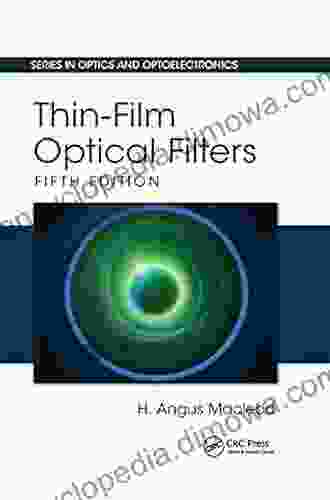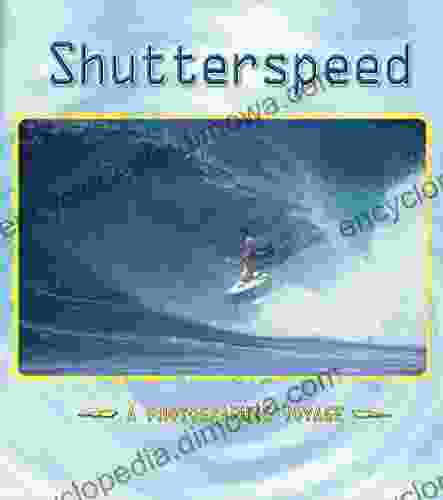An Introduction to Distributed Optical Fiber Sensors: Revolutionizing Fiber Optic Sensing

In the realm of sensing technologies, a revolutionary breakthrough has emerged with the advent of distributed optical fiber sensors (DOFS). These innovative devices harness the power of fiber optics to provide continuous and real-time measurements along the entire length of an optical fiber, unlocking unprecedented possibilities in various industries.
4.6 out of 5
| Language | : | English |
| File size | : | 8533 KB |
| Text-to-Speech | : | Enabled |
| Screen Reader | : | Supported |
| Enhanced typesetting | : | Enabled |
| Print length | : | 471 pages |
| X-Ray for textbooks | : | Enabled |
This article serves as a comprehensive to DOFS, providing a detailed overview of their principles, applications, and benefits. Join us as we delve into the fascinating world of distributed sensing and explore how DOFS are transforming the way we monitor and manage critical infrastructure, enhance industrial processes, and ensure public safety.
Principles of Distributed Optical Fiber Sensing
DOFS operate on the principle of Rayleigh backscattering, a phenomenon that occurs when light traveling through an optical fiber encounters microscopic irregularities and imperfections in the fiber's structure. These imperfections scatter a small portion of the light back toward the source, carrying information about the fiber's condition and any external influences acting upon it.
By analyzing the backscattered light, DOFS can measure various parameters along the fiber's length, including strain, temperature, vibration, and acoustic emissions. This enables the creation of highly sensitive and versatile sensors that can monitor the health and integrity of structures, detect leaks and intrusions, and provide real-time data for various applications.
Applications of Distributed Optical Fiber Sensors
The versatility of DOFS has led to their widespread adoption across a diverse range of industries, including:
- Structural Health Monitoring: DOFS can continuously monitor the structural integrity of bridges, buildings, pipelines, and other critical infrastructure, detecting potential hazards such as cracks, corrosion, and overloading.
- Oil and Gas Exploration: DOFS provide valuable insights into reservoir pressure, temperature, and flow rates, enabling more efficient and cost-effective exploration and production.
- Security: DOFS can be used to create highly sensitive intrusion detection systems, perimeter security fences, and tamper-proof sensing networks.
- Smart Cities: DOFS can enhance smart city infrastructure by providing real-time data on traffic flow, air quality, and environmental conditions, enabling improved decision-making and resource management.
Benefits of Distributed Optical Fiber Sensors
DOFS offer numerous benefits over traditional sensing technologies, including:
- Continuous and Real-time Monitoring: DOFS provide continuous and real-time measurements along the entire fiber length, allowing for early detection of anomalies and immediate response.
- High Sensitivity and Accuracy: DOFS are highly sensitive and accurate, enabling the detection of even the smallest changes in strain, temperature, and other parameters.
- Long Sensing Range: DOFS can monitor up to dozens of kilometers of fiber, making them ideal for large-scale applications.
- Multiplexing Capability: Multiple DOFS can be multiplexed onto a single fiber, allowing for simultaneous monitoring of multiple parameters.
- Immunity to Electromagnetic Interference: Optical fibers are immune to electromagnetic interference, making DOFS ideal for use in harsh environments.
Distributed optical fiber sensors represent a transformative technology in the field of sensing and measurement. Their unique capabilities enable continuous and real-time monitoring of critical infrastructure, enhance industrial processes, and ensure public safety in unprecedented ways.
As research and development in DOFS continue to advance, we can expect even more innovative and groundbreaking applications in the future. This technology holds the potential to revolutionize industries and create a safer, more efficient, and interconnected world.
For further insights into the fascinating world of distributed optical fiber sensing, we highly recommend the book "An to Distributed Optical Fiber Sensors," a comprehensive guide that delves into the theory, implementation, and applications of this cutting-edge technology.
4.6 out of 5
| Language | : | English |
| File size | : | 8533 KB |
| Text-to-Speech | : | Enabled |
| Screen Reader | : | Supported |
| Enhanced typesetting | : | Enabled |
| Print length | : | 471 pages |
| X-Ray for textbooks | : | Enabled |
Do you want to contribute by writing guest posts on this blog?
Please contact us and send us a resume of previous articles that you have written.
 Book
Book Novel
Novel Page
Page Chapter
Chapter Text
Text Story
Story Genre
Genre Reader
Reader Library
Library Paperback
Paperback E-book
E-book Magazine
Magazine Newspaper
Newspaper Paragraph
Paragraph Sentence
Sentence Bookmark
Bookmark Shelf
Shelf Glossary
Glossary Bibliography
Bibliography Foreword
Foreword Preface
Preface Synopsis
Synopsis Annotation
Annotation Footnote
Footnote Manuscript
Manuscript Scroll
Scroll Codex
Codex Tome
Tome Bestseller
Bestseller Classics
Classics Library card
Library card Narrative
Narrative Biography
Biography Autobiography
Autobiography Memoir
Memoir Reference
Reference Encyclopedia
Encyclopedia Scot Ritchie
Scot Ritchie Helen Walker Law
Helen Walker Law Barbara Mariconda
Barbara Mariconda Neil Mcnerney
Neil Mcnerney 7th Edition Kindle Edition
7th Edition Kindle Edition Irina Rish
Irina Rish Ann Slavick
Ann Slavick Martha Buelt
Martha Buelt Carrie Dirisio
Carrie Dirisio Edward Einhorn
Edward Einhorn Dan Hefetz
Dan Hefetz Chika Shiomi
Chika Shiomi Priya A
Priya A Sue Wentz
Sue Wentz Sophie Howard
Sophie Howard Kerry Atkinson
Kerry Atkinson Loren W Christensen
Loren W Christensen A A Coley
A A Coley Kenn Amdahl
Kenn Amdahl Amber Fisher
Amber Fisher
Light bulbAdvertise smarter! Our strategic ad space ensures maximum exposure. Reserve your spot today!

 Aldous HuxleyThin Film Optical Filters: A Journey into the Extraordinary World of Light...
Aldous HuxleyThin Film Optical Filters: A Journey into the Extraordinary World of Light... Denzel HayesFollow ·12.6k
Denzel HayesFollow ·12.6k Greg FosterFollow ·16.9k
Greg FosterFollow ·16.9k Forrest BlairFollow ·8k
Forrest BlairFollow ·8k Brian BellFollow ·13.7k
Brian BellFollow ·13.7k Darren BlairFollow ·17.4k
Darren BlairFollow ·17.4k Felix HayesFollow ·15k
Felix HayesFollow ·15k Robin PowellFollow ·3.8k
Robin PowellFollow ·3.8k Hugo CoxFollow ·13.5k
Hugo CoxFollow ·13.5k

 Zadie Smith
Zadie SmithWork in Early Modern Italy 1500-1800: A Captivating...
: Unraveling the Enigmatic...

 Noah Blair
Noah BlairIceland's Most Unusual Museums: A Quirky Guide to the...
Iceland is a land of natural wonders, from...

 Ross Nelson
Ross NelsonShutterSpeed - A Photographic Voyage
Embark on an Unforgettable Photographic...

 Wayne Carter
Wayne CarterUnveiling the Secrets: Detailed Streamside Field Guide to...
Embark on an unforgettable fly fishing...

 Patrick Rothfuss
Patrick RothfussHannah Montana: Reality Check Junior Novel 19
The Ultimate Behind-the-Scenes Adventure for...

 Chad Price
Chad PriceCreate More Than 30 Projects from Vintage Pieces: Unleash...
Embrace the Art of...
4.6 out of 5
| Language | : | English |
| File size | : | 8533 KB |
| Text-to-Speech | : | Enabled |
| Screen Reader | : | Supported |
| Enhanced typesetting | : | Enabled |
| Print length | : | 471 pages |
| X-Ray for textbooks | : | Enabled |










